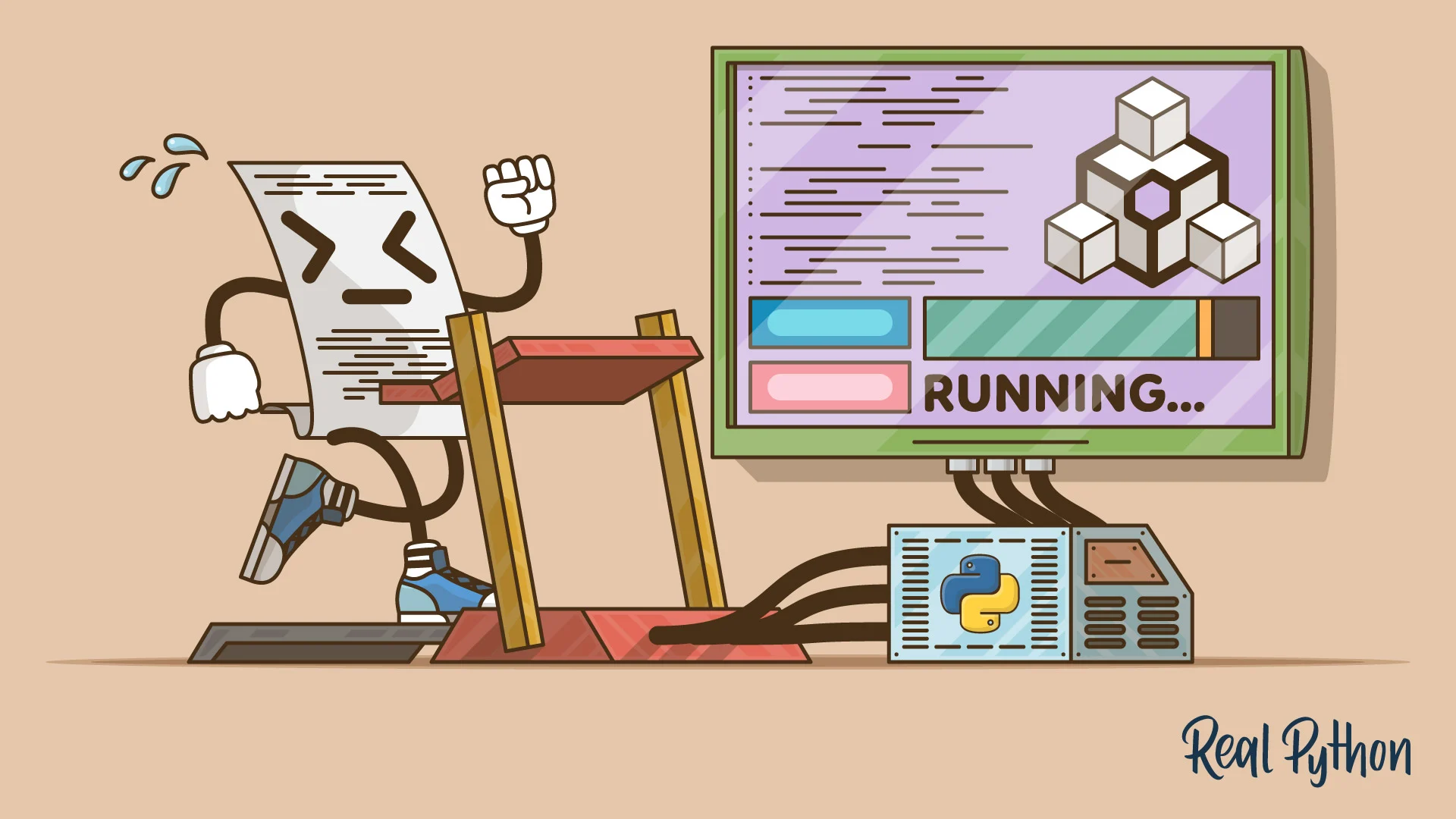- Exploring the Amazing Python Features
- Understanding Memory Management in Python: A Comprehensive Guide
- Exploring the Benefits of Python Programming
- Exploring the Best IDE for Python Programming
- Java or Python: Which Language Holds the Key to Your Programming Success?
- PHP vs Python: Which Language is Best for Your Project?
- From Bugs to Brilliance: Harnessing Python Exceptions for Powerful Coding
- Types of inheritance in python
- How to Create an Android App with Python
- Python vs C++: Uncovering the Best Programming Language for Your Needs
- How should I start learning Python?
- Python Dictionary: A Comprehensive Guide to Understanding and Using Dictionaries
- Introduction to Python Generators: What They Are and How to Use Them
- A Comprehensive Guide to Understanding Python else if Statements for Optimal Decision Making
- Boost Your Programming Skills with Python NumPy: An In-Depth Exploration of Its Features
- Exploring the Different Types of Python Compiler Available
- Understanding Python Tuples: A Comprehensive Guide
- Python List: A Comprehensive Guide to Working with Lists in Python
- Exploring Logical Operators in Python: A Comprehensive Guide
- Exploring the Different Types of Python Operators: A Comprehensive Guide
- A Comprehensive Guide to Python Datatypes
- Introduction to Python for Beginners
- Python Download: Your Comprehensive Guide to Getting Started
- how to comment out multiple lines in python
Memory management is an important concept to understand when working with Python. It is essential for ensuring that your code runs efficiently and that your system resources are used effectively. This comprehensive guide provides an in-depth look at memory management in Python, covering topics such as memory allocation, garbage collection, and memory leaks. With this guide, you’ll gain a better understanding of how memory management works in Python and how to optimize your code for better performance.
Overview of Memory Management in Python
Python is an interpreted, high-level, general-purpose programming language that is widely used for developing web applications, software, and other applications. Memory management in Python is an important aspect of the language, as it helps to ensure that the program runs efficiently and without any memory leaks.
Memory management in Python is managed by the Python Virtual Machine (PVM). The PVM is responsible for allocating memory to objects and tracking the memory usage of the program. It also handles garbage collection, which is the process of reclaiming memory that is no longer in use.
When a program is running, the PVM will allocate memory to objects as they are created. This memory is then tracked and managed by the PVM. When an object is no longer in use, the PVM will reclaim the memory and make it available for other objects. This process is known as garbage collection.
Python also has built-in memory management tools that can be used to optimize memory usage. These tools include the sys module, which provides access to system-level information, and the gc module, which provides access to the garbage collector.
Python also has a built-in memory profiler that can be used to identify memory leaks and other memory-related issues. The profiler can be used to identify objects that are taking up too much memory and can be used to optimize the program’s memory usage.
Memory management in Python is an important aspect of the language, as it helps to ensure that the program runs efficiently and without any memory leaks. By using the built-in memory management tools, developers can optimize their programs and ensure that they are running as efficiently as possible.
Memory Allocation Strategies in Python
Python is a high-level programming language that is used to develop a wide range of applications. It is an interpreted language, meaning that the code is not compiled before execution. As a result, memory management in Python is an important consideration for developers. Memory allocation strategies are techniques used to manage memory in Python programs.
The Python interpreter uses a memory management system called the garbage collector to manage memory. The garbage collector is responsible for reclaiming memory that is no longer in use. It does this by searching through the memory for objects that are no longer referenced by the program and then releasing the memory associated with them.
The garbage collector is a simple and effective way to manage memory in Python, but it is not the only memory allocation strategy available. Python also supports manual memory management, which allows developers to explicitly allocate and deallocate memory. This can be useful in certain situations, such as when a program needs to access large amounts of data or when a program needs to manage memory more efficiently.
Another memory allocation strategy is reference counting. This is a technique used to keep track of how many references to an object exist in a program. When an object is no longer referenced, the reference count is decremented and the memory associated with the object is released. Reference counting is an efficient way to manage memory, but it can lead to memory leaks if not used correctly.
Finally, Python also supports memory pools. Memory pools are pre-allocated blocks of memory that can be used to store objects. This can be useful for programs that need to store large amounts of data, as it eliminates the need to constantly allocate and deallocate memory. Memory pools are also useful for programs that need to access data quickly, as the data is already in memory and does not need to be retrieved from disk.
Memory allocation strategies are an important consideration for Python developers. By understanding the different strategies available and how they work, developers can ensure that their programs are using memory efficiently and that memory leaks are avoided.
Garbage Collection in Python
Garbage Collection in Python is an important part of memory management in Python. It is a process of automatically freeing up memory that is no longer being used. This process helps to ensure that the memory used by a program is kept to a minimum and that the program runs efficiently.
Garbage Collection in Python works by tracking objects that are no longer being used. When an object is no longer being used, the garbage collector will mark it as garbage and free up the memory associated with it. This process is known as garbage collection.
Garbage Collection in Python is an important part of memory management in Python. It helps to ensure that the memory used by a program is kept to a minimum and that the program runs efficiently. It also helps to reduce the amount of memory fragmentation that can occur when a program is running.
Garbage Collection in Python is handled by the Python interpreter. The interpreter keeps track of objects that are no longer being used and marks them as garbage. When the interpreter finds an object that is no longer being used, it will free up the memory associated with it.
Garbage Collection in Python is an important part of memory management in Python. It helps to ensure that the memory used by a program is kept to a minimum and that the program runs efficiently. It also helps to reduce the amount of memory fragmentation that can occur when a program is running.
Memory Leaks in Python
Memory Leaks in Python are a type of software bug that can occur when memory management in Python is not properly handled. Memory Leaks occur when a program allocates memory for an object but fails to deallocate it when it is no longer needed. This can lead to a gradual decrease in available memory over time, eventually leading to a crash or other undesirable behavior.
Memory Leaks in Python can be caused by a variety of factors, including incorrect use of memory management functions, incorrect use of object references, and incorrect use of the garbage collector. The most common cause of Memory Leaks in Python is incorrect use of memory management functions. Memory management functions are responsible for allocating and deallocating memory for objects. If these functions are not used correctly, objects can be left in memory even after they are no longer needed.
Another common cause of Memory Leaks in Python is incorrect use of object references. When an object is created, a reference to it is stored in memory. If the reference is not removed when the object is no longer needed, the object will remain in memory and will not be deallocated.
Finally, incorrect use of the garbage collector can also lead to Memory Leaks in Python. The garbage collector is responsible for cleaning up unused objects and reclaiming the memory they occupy. If the garbage collector is not used correctly, objects can remain in memory even after they are no longer needed.
Fortunately, Memory Leaks in Python can be avoided by following best practices for memory management. This includes using memory management functions correctly, properly managing object references, and using the garbage collector correctly. By following these best practices, Memory Leaks in Python can be avoided and programs can run more efficiently.
Best Practices for Memory Management in Python
Python is a high-level programming language that is widely used in web development, software engineering, data science, and more. Memory management in Python is an important concept to understand, as it can have a significant impact on the performance of your code.
Memory management in Python is the process of managing the memory allocated to objects and data structures used in a program. This includes allocating memory to objects, releasing memory when it is no longer needed, and reusing memory for new objects.
When it comes to memory management in Python, there are several best practices that should be followed. First, it is important to use the appropriate data structure for the task at hand. For example, if you are dealing with a large amount of data, it is best to use a list or dictionary instead of a tuple. This will help to reduce the amount of memory used.
Second, it is important to use the appropriate data types. Python supports several different data types, such as integers, floats, strings, and booleans. Using the correct data type can help to reduce the amount of memory used.
Third, it is important to use the appropriate data structures. Python supports several different data structures, such as lists, dictionaries, and sets. Using the correct data structure can help to reduce the amount of memory used.
Fourth, it is important to use the appropriate memory management techniques. Python supports several different memory management techniques, such as garbage collection and reference counting. Using the correct memory management technique can help to reduce the amount of memory used.
Finally, it is important to use the appropriate memory allocation techniques. Python supports several different memory allocation techniques, such as dynamic memory allocation and static memory allocation. Using the correct memory allocation technique can help to reduce the amount of memory used.
By following these best practices for memory management in Python, you can ensure that your code is running efficiently and that your program is using the least amount of memory possible. This can help to improve the performance of your code and ensure that it is running as efficiently as possible.
Memory management in Python is an important concept to understand in order to optimize your code and maximize performance. This comprehensive guide provides a thorough overview of the different memory management techniques available in Python, as well as the advantages and disadvantages of each. By understanding memory management in Python, developers can make informed decisions about how to best utilize the memory resources available to them.
















